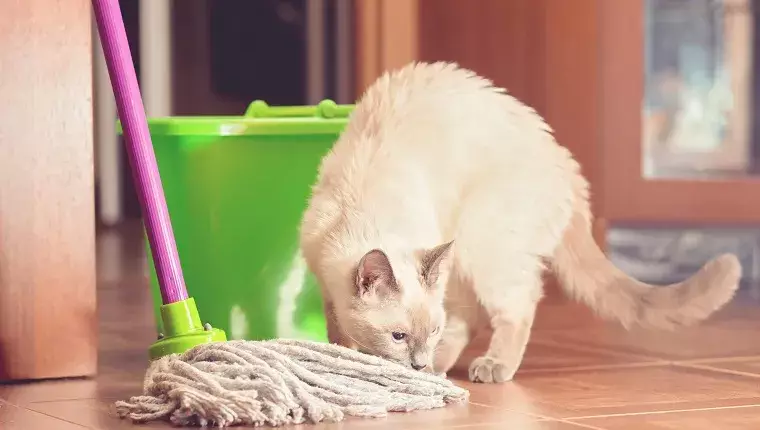Bringing a cat into your home can bring immense joy, companionship, and a lot of purring. However, one of the less pleasant realities of cat ownership is dealing with the occasional mishap involving cat urine. Whether your feline friend mistakenly misses the litter box or is struggling with health concerns, cat pee can be a challenge to eliminate completely. The lingering odor and the risk of repeat offenses can create a frustrating situation. Understanding effective cleaning strategies is paramount in ensuring your space remains fresh and free from unwanted scents.
Understanding the Issue: Why Cats Avoid the Litter Box
Before exploring cleanup methods, it’s essential to understand why your cat might bypass the litter box. Factors such as territorial disputes, stress, health complications like urinary tract infections (UTIs), or simply a distaste for the litter you’re using can contribute to this behavior. If your cat starts urinating outside their designated area, it may be time to assess their health and environment. Ensuring that their litter box is clean, accessible, and in a peaceful location can often resolve behavioral issues. Additionally, consulting a veterinarian for a health assessment can rule out any underlying medical problems. Understanding and addressing the root cause is the first step in effectively managing litter box problems.
When an accident occurs, quick action is crucial. As soon as you discover cat urine, the first step is to absorb as much of the liquid as possible. Using paper towels or a clean cloth, gently blot the area; be cautious not to rub, as this may drive the urine deeper into carpet fibers or upholstery. For those particularly sensitive to smells, consider wearing a mask during the cleanup to avoid overwhelming odors.
It’s vital to avoid using cleaning products that contain ammonia, as they mimic the scent of cat urine and may encourage your pet to mark the spot again. Instead, a simple combination of water and vinegar can be effective in neutralizing odors. Mix three parts warm water with one part vinegar and soak the affected area briefly; this will help break down the urine and neutralize the smell.
For those inclined toward DIY solutions, there are various home remedies that can assist in reducing the impact of cat urine. After your initial cleanup with the water-vinegar solution, consider applying baking soda. Its absorbent properties can capture any remaining odors.
For a more potent concoction, create a mixture using one teaspoon of liquid dish soap combined with three-quarters of a cup of hydrogen peroxide. This may provide even deeper cleaning action when applied after the baking soda. However, it is important to test any DIY cleaning solution on a small, inconspicuous area first to ensure it doesn’t damage your flooring or upholstery.
Homemade remedies sometimes fall short, especially when it comes to dealing with uric acid, the primary culprit behind cat urine odors. In such cases, enzymatic cleaners are your best friend. These specialized products contain enzymes that break down uric acid, effectively eliminating the odor rather than just masking it. When using an enzymatic cleaner, remember to saturate the area thoroughly, allowing the solution to sit for about 15 minutes before blotting up the excess.
Enzymatic cleaners can be found in pet stores or online, and it’s essential to follow the manufacturer’s instructions for the best results. This method can be particularly effective when repeat accidents occur in the same location, as it targets the problem at its source.
Advanced Tools: Utilizing Technology
In struggle against stubborn cat urine stains and odors, investing in a wet vacuum designed for pet cleanup can be a game changer. These devices can spray a cleaning solution while simultaneously sucking up the soiled liquid, making the cleanup process much more efficient. When using this method, don’t forget to use an enzyme-compatible cleaner to maximize your results.
Additionally, consider employing a black light to identify hidden urine stains that might not be visible under normal lighting. Cat urine fluoresces under UV light, allowing you to pinpoint any areas that need attention.
No matter how thorough your cleaning process, some areas might require multiple attempts to completely eliminate the odor. Cat urine can be quite persistent, so don’t hesitate to repeat the cleaning process as needed. Having patience with the situation, and consistently reinforcing good litter box habits with your cat, is key.
Managing incidents of cat urine is undoubtedly a challenge, but with the correct strategies, you can restore your home to a clean and fresh condition. Exploring different cleaning methods, both traditional and modern, will empower you to tackle any feline mishap effectively. What are your favorite strategies for managing cat urine accidents? Sharing experiences can not only provide support but also foster community knowledge among fellow cat owners.


Leave a Reply